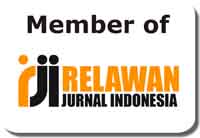Online English Grammar Instruction Using Polysynchronous Approach During Pandemic Times
Abstract
Keywords
Full Text:
PDFReferences
Abdu, A. K. (2018). A review of technology integration in ELT: From CALL to MALL. Language Teaching and Educational Research, 1(1), 1-12.
Ajzen, I., (1991). The theory of planned behavior. Organizational behavior and human decision processes, 50(2), pp.179-211.
Arifani, Y., Suryanti, S., Wicaksono, B. H., & Inayati, N. (2020). EFL teacher blended professional training: a review of learners’ online and traditional learning interactions quality. 3L: The Southeast Asian Journal of English Language Studies, 26(3), 124-138.
Atmojo, A. E. P., & Nugroho, A. (2020). EFL classes must go online! Teaching activities and challenges during COVID-19 pandemic in Indonesia. Register Journal, 13(1), 49-76.
Burston, J. (2014). MALL: The pedagogical challenges. Computer Assisted Language Learning, 27(4), 344-357.
Chinnery, G. M. (2014). Call me... maybe: A framework for integrating the internet into ELT. In English Teaching Forum (Vol. 52, No. 1, pp. 2-13). US Department of State. Bureau of Educational and Cultural Affairs, Office of English Language Programs, SA-5, 2200 C Street NW 4th Floor, Washington, DC 20037.
Dutta, M., & Mukherjee, M. (2018). Importance of grammar in learning English as a second language. International Journal of English Learning & Teaching Skills, 1(1), 71-76.
Ghobrini, R. E. A. (2020). Synergizing facebook and youtube for e-teaching grammar during Covid-19 pandemic. International Journal of Education and Science, 3(2), http://ekrpoch.culturehealth.org/jspui/handle/lib/368
Fauzan. (2021). Polysynchronous model: Solusi selama dan pasca pandemi. disampaikan pada seminar online ‘pendidikan tinggi di indonesia menghadapi pandemi: Strategi efektivitas pembelajaran daring’ dated 25 february. URL: https://nuni.mobi/blog/2021/03/14/pendidikan-tinggi-di-indonesia-menghadapi-pandemi-strategi-efektivitas-pembelajaran-daring/
Ghounane, N. (2020). Moodle or social networks: What alternative refuge is appropriate to Algerian EFL students to learn during COVID-19 pandemic. Arab World English Journal, 11(3), 21-41.
Hartman, R. J., Townsend, M. B., & Jackson, M. (2019). Educators’ perceptions of technology integration into the classroom: a descriptive case study. Journal of Research in Innovative Teaching & Learning, 12(3), 236-249.
Hedberg, J. G., & Stevenson, M. (2014). Breaking away from text, time and place. In Curriculum models for the 21st century (pp. 17-33). Springer, New York, NY.
Inayati, N., & Waloyo, A. A. (2022). The influence of Quizziz online gamification on learning engagement and outcomes in online English language teaching. Journal on English as a Foreign Language, 12(2), 249-271. https://doi.org/10.23971/jefl.v12i2.3546
Karuppannan, S., & Mohammed, L. A. (2020). Predictive factors associated with online learning during Covid-19 pandemic in malaysia: A conceptual framework. International Journal of Management and Human Science (IJMHS), 4(4), 19-29.
Kolour, D. M., Khaksaran, K., & Ali, M. B. (2018, April). Vygotskianism and the enhancement of mobile language learners’ argumentative writing skill. In Proceedings of the 9th International RAIS Conference on Social Sciences and Humanities.
Miles, M. B., & Huberman, A. M. (1994). Qualitative data analysis: An expanded sourcebook. Los Angeles: Sage.
Muslimin, A. I., & Harintama, F. (2020). Online learning during pandemic: Students' motivation, challenges, and alternatives. Loquen: English Studies Journal, 13(2), 60-68.
Ngan, T. T. (2019). The connectedness between organizational time/space and experienced time/space from the perspective of an online distance student. VNU Journal of Foreign Studies, 35(6), 106-121.
Oztok, M., Wilton, L., Lee, K., Zingaro, D., Mackinnon, K., Makos, A., Phyrangee, K., Brett, C., & Hewitt, J. (2014). Polysynchronous: dialogic construction of time in online learning. E-learning and digital media, 11(2), 154-161.
Rehn, N., Maor, D., & McConney, A. (2016). Investigating teacher presence in courses using synchronous videoconferencing. Distance Education, 37(3), 302-316.
Reychav, I., & McHaney, R. (2017). The relationship between gender and mobile technology use in collaborative learning settings: An empirical investigation. Computers & Education, 113, 61-74.
Savvidou, C. (2013). ‘Thanks for sharing your story’: the role of the teacher in facilitating social presence in online discussion. Technology, Pedagogy and Education, 22(2), 193-211.
Shahnama, M., Yazdanmehr, E., & Shirvan, M. E. (2021). Challenges of online teaching during the COVID-19 pandemic in an English as a foreign language context: A process tracing approach. Research Square, 1-29. Doi: https://doi.org/10.21203/rs.3.rs-141388/v1
Strauß, S., & Rummel, N. (2020). Promoting interaction in online distance education: designing, implementing and supporting collaborative learning. Information and learning sciences, 121(5), 251-260.
Suparto. (2020). Relevance framework for polysynchronous learning [PowerPoint Slides]. In ‘bimbingan teknis bagi instruktur polysynchronous learning’ held 7 september 2020 organized by Universitas Muhammadiyah Malang. https://www.antaranews.com/berita/1596434/umm-kembangkan-pembelajaran-bauran-dengan-siklus-pe5-di-masa-pandemi
Sun, Z., Liu, R., Luo, L., Wu, M., & Shi, C. (2017). Exploring collaborative learning effect in blended learning environments. Journal of computer assisted learning, 33(6), 575-587.
Sutrisna, I. P. E., Lagatama, P., & Dane, N. (2020). The efficacy of MALL instruction in tourism english learning during Covid-19 pandemic. CULTOURE: Culture Tourism and Religion, 1(2), 122-135.
Underwood, P. R. (2017). Challenges and change: Integrating grammar teaching with communicative work in senior high school EFL classes. SAGE Open, 7(3), 2158244017722185.
UMM/University of Muhammadiyah Malang (2020). Polysynchronous learning design. Retrieved from https://www.umm.ac.id/id/arsip-koran/bhirawa/umm-kembangkan-model-pembelajaran-bauran-polysyncronous.html on 11 June 2021.
Wang, L. (2019). Research on the application of the mind map in English Grammar teaching. Theory and Practice in Language Studies, 9(8), 990-995.
Wong, J., Baars, M., Davis, D., Van Der Zee, T., Houben, G. J., & Paas, F. (2019). Supporting self-regulated learning in online learning environments and MOOCs: A systematic review. International Journal of Human–Computer Interaction, 35(4-5), 356-373. Doi: https://doi.org/10.1080/10447318.2018.1543084
Wujiabudula, A. (2018). Teachers’ general perspective towards the Computer-Assisted Language Learning (CALL) in ELT classrooms. Journal of Foreign Language Education and Technology, 3(2), 73-100.
Yükselir, C. (2017). A meta-synthesis of qualitative research about mobile assisted language learning (MALL) in foreign language teaching. Arab World English Journal (AWEJ), 8(3), 302-318.
DOI: http://dx.doi.org/10.31332/lkw.v0i0.3350
Copyright (c) 2022 Nina Inayati, Suparto, Dwi Mawan Karifianto

This work is licensed under a Creative Commons Attribution-ShareAlike 4.0 International License.
Langkawi: Journal of The Association for Arabic and English indexed by:



















.png)
.png)

.png)
2.png)








